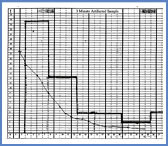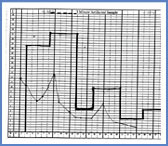Auditory Integration Training
“My 10-year-old child stated after a couple of days into the AIT therapy: ‘The buzzing sound is gone!’. His reading and writing has improved. There has been a great decrease in anxiety.”
“My 10-year-old child stated after a couple of days into the AIT therapy: ‘The buzzing sound is gone!’. His reading and writing has improved. There has been a great decrease in anxiety.”
“I have Rheumatoid Arthritis which is now in remission. I have a new flexibility and sleep very well. This has improved my quality of life.”
– A 92 year old woman
According to the ATEC scoring, my son does not qualify anymore for autism. Yes, I agree with Normand Doidge:
“…many ‘circuits’ and even basic reflexes that we think are hardwired, are not.”
The Brain That Changes Itself
Giving the brain a “second chance” (Sally Goddard)
Mental and emotional flexibility with stability
“The constant busyness in my head, the constant shifting of tasks have all but stopped. I can focus more clearly…My listening skills have greatly increased. Highly recommend for anyone young or old.”
“NeuroMovement® was an integral part of my healing toolbox that helped me go from the couch with chronic daily pain to hiking a mountain.”

Attention inefficiencies can be observed in the brain wave patterns of an EEG. Different patterns are found in individuals with attention difficulties. The most common pattern presents as an excess in the production of theta (slow waves) in comparison to beta (faster waves). While doing schoolwork, a child with ADD will characteristically produce more slow waves. A child who does not have attention difficulty will produce faster brain waves as he focusses on the task. A child with hyperactivity may produce less SMR while presenting more theta in relation to the faster beta waves.
The Neurofeedback training aims at helping the person to self-regulate the production of certain brain waves for certain tasks. Each type of brain wave has its function. We need all of them. The goal of the neurofeedback is to gain flexibility to access the right ones for the right job. For example, a person who really wants to pass an exam will need to stay calm but alert (SMR), not tune-out (keeping control on the theta), nor daydreaming (with the alpha waves in check) while learning new material (accessing the beta waves). This balanced brain functioning allows for the individual to better access their real potential. Most individuals learn these skills through school. However, for different reasons, many people need help in order to achieve their real potential. They are often seen as low achievers. The teacher and parents know that the child is intelligent but the academic results are lower than expected. The employer recognizes that the person is capable but the work production is lower than expected.

Different researches using computer technology has confirmed the pertinence of this new learning-therapeutic tool. Dr. Daniel G. Amen who wrote Healing ADD is using the SPECT (single photon emission computed tomography, a nuclear medicine study that evaluates brain flow and activity patterns. Dr. Amen explains:
“In my experience with neurofeedback and ADD, many people are able to improve their reading skills and decrease their need for medication. Also, neurofeedback has helped to decrease impulsivity and aggressiveness. It is a powerful tool, because we are giving them more control over their own physiological processes.”
Research conducted by Joanne Lévesques, a neuropsychologist from Montreal using the MRI (magnetic resonance imagery) also confirms these findings. Dr. Joel Lubar, for the University of Tennesse, has found that the IQ scores rose from twelve to twenty points in children and adults after forty hours of neurofeedback training. The research of Dr. Linda Thompson, from Toronto has brought forth the same conclusions. It is considered that the success rate of neurofeedback is approximately 75% which is 3 out of 4.
Neurofeedback training is not a cure for all ADD. The professionals specializing with attention deficit disorder and the parents of these children know very well the intervention has to be multifaceted, including analysing what he/she eats, what entertainment he/she watches, sleep quality and quantity, self-esteem, etc. Contrary to medication neurofeedback is a learning tool which brings changes over time. Neurofeedback training constitues an excellent tool to learn self-regulation which can be applied to different tasks in order for the person to extend the use of his/her real potential. Neurofeedback training is offered by Suzanne Day who is certified by the BCIA (Biofeedback Certification Institute of America). Please contact us if you are interested. Do not hesitate to e-mail us.
These graphs illustrate the distribution of the types of brain waves as well as the quantity produced. The horizontal axe refers to the frequency of the waves (3-7 hertz: Theta, 8-12 hertz: Alpha, 13-15hertz: SMR, 15-20 hertz: Beta. The vertical axe refers to the amplitude of the waves: low to high. The different profiles represented are the most frequent observed through a Quantitative EEG. These graphs suggest different types of attention inefficiencies.
